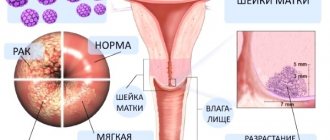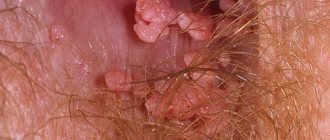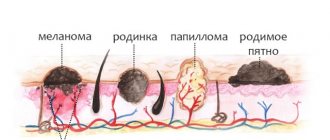Removing papillomas during pregnancy is a question facing many women expecting the birth of a baby. Fearing for the health of the unborn child, some prefer to postpone treatment to a later date. Papillomas are a common form of benign growths, which are activated at the stage of hormonal changes.
Human papillomavirus infection during pregnancy
Human papillomavirus infection can occur in a latent form for a long time. Exacerbations occur when immunity decreases, for example, during pregnancy. According to statistics, about 80% of expectant mothers find papillomas on their skin. Externally, the rashes are the same as those of all other people: flesh-colored or slightly darker, round in shape, often on a stalk. But during this period they appear on a larger scale and faster.
The neoplasms themselves are painless, but unaesthetic, so many women want to eliminate them as quickly as possible. Human papillomavirus can be non-oncogenic and oncogenic, with a low or high risk of degeneration into a cancerous tumor.
In order to find out what type of rashes are, it is necessary to conduct laboratory diagnostics.
Discomfort is caused by papillomas located in places of contact with the edge or seam of clothing, as well as on the bends of the limbs. In these cases, there is a possibility of damage and bleeding.
Particularly fragile are condylomas - wart-like growths that are attached to the surface with a thin stalk. They are often found on the genitals and can cause discomfort, itching, and a bloody or yellow-green vaginal discharge.
Papillomas - what is it?
The correct name for this disease is human papillomavirus; it is presented in the form of neoplasms on the skin. They are in most cases small and flesh-colored, but can also be darker. When these mole-like formations are located on the face or neck, there is, of course, little beauty in that. But there is no need to be afraid of them either! They are not malignant in nature.
Papillomas during pregnancy are most often localized in the following places:
- face
- neck
- breast
- armpits
- groin
Interestingly, the condition of the expectant mother’s skin before pregnancy does not directly affect the formation of papillomas. It would be more correct to say that pregnancy itself is a factor that provokes their occurrence.
If papillomas were already present before pregnancy, then the likelihood of their increase during pregnancy is very high. And neoplasms appear mainly in the second trimester.
Effect on the pregnant woman and fetus
Since papillomas are a viral disease, many women are concerned about their possible impact on the intrauterine development of the fetus and the course of pregnancy in general. If the tumors are not located on the genitals, then they do not pose any danger.
When papillomas are located on the genitals, the growth of rashes accelerates, and the risk of damage and bleeding increases. Vaginal discharge also appears - a moist environment, ideal for the proliferation of HPV and other infectious agents. Against this background, hormonal imbalances and decreased immunity may occur. Read more about how to strengthen your immune system during pregnancy →
In rare cases, genital papillomas can be passed on to the baby during childbirth. Often the baby’s body copes on its own and the disease enters an asymptomatic phase that does not pose a danger. Sometimes, after infection, the baby develops tumors on the vocal cords (respiratory tract papillomatosis) or in other places. Such conditions are dangerous and require treatment, but are extremely rare.
How dangerous is the appearance of the papilloma virus during pregnancy?
All women who are in an “interesting” situation and faced with this problem are concerned about how dangerous HPV is for an unborn baby.
In most cases, these fears are unfounded: the virus does not affect the health of the fetus in any way, except in cases where unpleasant growths affect the vagina and labia of the expectant mother.
- Formations localized on the genitals pose a threat to the health of the baby who is about to be born, since in this case the baby may become infected during its passage through the birth canal. And this, in turn, is fraught with the occurrence of a disease in a child such as condylomatosis (respiratory or laryngeal papillomatosis) of the larynx.
That is why, in the event of genital papillomas, a pregnant woman is recommended to abandon natural delivery and resort to cesarean section.
- And for the woman herself, genital warts (as growths in the genital area are called) pose a serious danger, since if left untreated and progressing, they can lead to cancerous tumors!
- The main threat posed by HPV is that, in combination with a weakened immune system, a woman may develop (or develop) various diseases that cause pregnancy complications and/or health problems in the newborn.
- In addition, HPV during pregnancy can cause the development of candidiasis (thrush), which can also infect the baby during childbirth.
Causes
In expectant mothers, skin rashes appear quickly and often cover large areas of the skin. The causes of exacerbation of human papillomavirus infection during pregnancy are as follows:
- natural decrease in immunity necessary for successful childbearing;
- exacerbation of some chronic diseases;
- hormonal changes that cause changes in the upper layers of the skin;
- more frequent damage to the skin, which is associated with a woman’s weight gain, as well as with immune and endocrine changes;
- diabetes mellitus, aggravated by hormonal surges.
Why did papillomas begin to grow?
During pregnancy, a woman's body experiences hormonal changes that significantly reduce the protective functions of the immune system. The body does not have the ability to resist the harmful pathogen and the virus begins to act actively. Women suffering from excess weight and diabetes mellitus are most susceptible to the disease.
There is an opinion that in recent months papillomatosis is most active due to excessive friction of the skin on clothing in some places, especially in the folds.
To identify the disease, women undergo an HPV test when registering. But it is better to do this at the pregnancy planning stage in order to assess the risks and undergo timely treatment to prevent relapse.
Diagnostics
A dermatologist or venereologist is involved in identifying human papillomavirus infection in a pregnant woman. Each type of virus manifests itself differently. Based on the examination data, a diagnosis can be made only in the case of genital warts. However, it is impossible to determine their type and degree of oncogenicity without laboratory research methods.
The main diagnostic method for human papillomavirus infection is PCR analysis. To obtain the material, the doctor makes a scraping from the cervix (less commonly, from the urethra). The essence of the method is that under the action of special enzymes, the amount of viral DNA in the sample increases exponentially. The infection is then easier to see using a microscope.
PCR diagnostics helps to detect the human papillomavirus, determine what type it is, how oncogenic it is, and also quantify it. The combination of these parameters is significant; it helps to determine when the infection occurred, and therefore those people who were carriers and need treatment.
In some cases, to obtain more accurate information about the structural features of the tissue and the correct location of the layers, a biopsy is prescribed. Histological analysis data allows us to judge the stage of the disease and the risk of degeneration of formations into cancer.
How does HPV affect conception?
The papilloma virus does not affect conception, women with any strain of HPV can become pregnant, bear a healthy child, if there are no other causes of infertility, the immune system functions normally.
If the mother's body is weakened, the virus can infect trophoblast cells in the early stages of pregnancy, causing spontaneous abortion. Trophoblasts initiate implantation of the fertilized egg into the uterine wall and, together with endometrial tissue, form the placenta. When they are destroyed, the embryo cannot develop normally and dies; the woman most often does not even suspect that fertilization has occurred.
To avoid various complications, during pregnancy planning, expectant mothers undergo the necessary tests. If HPV of oncogenic strains and pathological changes in cervical tissue are detected, an additional biopsy and histological examination are performed. When the virus provokes the growth of genital warts, they are removed and a course of vitamins and immunomodulators is prescribed. After treatment, the woman is allowed to plan a pregnancy.
Treatment
If a woman is diagnosed with pregnancy and papilloma, depending on how dangerous the virus is, treatment can be carried out from the 28th week of gestation or delayed until the end of the gestation process. If the rashes on the expectant mother are localized in places where skin trauma often occurs, the papillomas must be removed.
For this purpose, surgical excision with local freezing of the skin, cryodestruction, laser treatment, and electrocoagulation can be used. But it is worth remembering that most papillomas disappear on their own after childbirth, so such intervention is an extreme measure necessary when genital warts grow.
From the 28th week, all organs of the fetus are already formed and the placenta partially protects it from harmful substances coming from the mother’s blood. From this period it is possible to use medications. Ointments and gels are used locally: Viferon, Solcoderm, Acyclovir, Oxolinic ointment. Medicines with an immunomodulatory effect are prescribed internally: Kipferon, Anaferon, Reaferon, Viferon.
Treatment of human papillomavirus infection is best done before pregnancy. This will help avoid discomfort and unnecessary worries during such a crucial period.
Complications
The most dangerous complication of human papillomavirus infection is cancer of the cervix, vagina or vulva. Of the more than 30 types of genital HPV, 15 are oncogenic. In 70% of cases, the cause of a malignant tumor is viruses type 16 and 18.
In addition to cancer, without timely treatment, papillomas can become a source of infection. For example, condylomas, growing, begin to fester and bleed, as a result of which the mucous membrane becomes covered with ulcerations. Pus along with blood contribute to the spread of the inflammatory infectious process. Immunity decreases, and chronic diseases of various organs become worse.
During pregnancy, a pronounced proliferation of genital papillomas can interfere with the natural process of childbirth. In such cases, a caesarean section is performed. The risk of complications in the child is low. Occasionally, infection occurs during passage through the birth canal; the disease manifests itself in the infant as papillomas in the respiratory tract, as well as on the genitals, anus, neck and armpits.
Prevention
Despite the fact that the main route of transmission is sexual, condoms do not protect against infection. A vaccine against human papillomavirus infection is under development. Therefore, prevention is based on maintaining the activity of the immune system: walks in the fresh air, a balanced diet, taking vitamin and mineral complexes, etc.
Also, in order to prevent rashes, a pregnant woman needs to monitor weight gain and wear comfortable underwear made of natural fabric to avoid irritation of the groin area. If papillomas do appear during pregnancy, then you should inform your doctor about this as soon as possible and discuss with him the need for treatment.
Pregnancy and human papillomavirus infection often occur simultaneously. An exacerbation of the disease is provoked by a decrease in immunity, hormonal changes, and weight gain. In most cases, it does not require treatment, since it does not pose a threat to the fetus and the gestation process. But if the rashes cause discomfort, then local antiviral agents, immunomodulatory drugs are used, and surgical removal of papillomas is also practiced.
Author: Olga Khanova, doctor, especially for Mama66.ru










